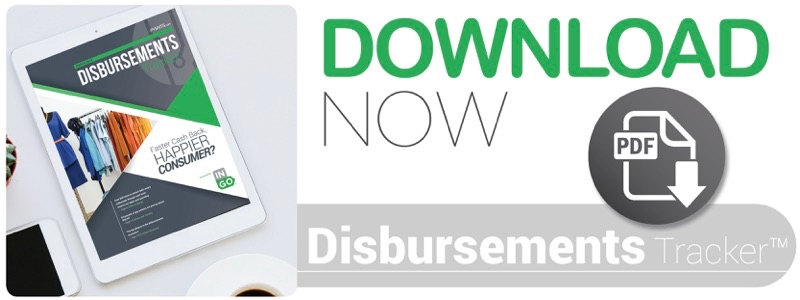TRENDING: Will Millennials Flock To Next-Day Cash Back Debit Rewards?

The role of gig workers in the economy is growing. Could that growth signal the end of the paper check as a payment method for worker earnings?
For the majority of gig workers, waiting to be paid is an all too common problem, and one that’s only aggravated by paper paychecks. According to recent PYMNTS research, in Q4 2017, only 51 percent of gig workers were paid within one week of rendering their services. That’s down from 63 percent in Q3 2017, indicating that more gig workers’ wages are being delayed even further.
But with gig workers slated to represent roughly 43 percent of the U.S. workforce by 2020, the demand for more efficient payment solutions is poised to grow.
The March Disbursements Tracker™ looks at the latest solutions that companies are offering in an effort to help these workers get paid for their labor.
Around the Disbursements World
In recent weeks, some big names have joined the push to pay employees more quickly.
That includes Mastercard, which just rolled out a new payment solution for freelancers. The company’s recently launched Inclusive Futures Project is intended to offer faster payment capabilities to gig workers, small and medium-sized businesses (SMBs) and entrepreneurs. The project also offers financial literacy tools and promotes smart city initiatives in urban communities.
Gig workers in the rideshare market are also turning to Mastercard’s solutions to get their earnings. Payment solution provider i2c recently announced a partnership with mobile banking FinTech Payfare to pay rideshare drivers using a prepaid Mastercard. Once payments are disbursed, cards can be used to make online and in-store purchases, withdraw funds from an ATM, transfer funds or pay bills.
Meanwhile, PayPal is also proving to be popular among gig workers.
PYMNTS’ research that found 35 percent of gig workers use PayPal to receive their wages, which helps reduce their reliance on paper checks. PYMNTS also found that 54 percent of gig workers are paid using direct deposit, a sign that paper checks could face further decline as a payment option.
Can a cash back program help millennials avoid the debt trap?
As it turns out, millennials are more afraid of debt than of death. A recent study found that 33 percent of millennials fear credit card debt, while just 20 percent said they were scared of the Grim Reaper.
As such, this generation is driving a greater issuance of debit cards than credit cards. But this preference also means that millennial consumers are missing out on the perks offered by credit card companies, such as cash back rewards on purchases.
But Eduardo Urdapilleta, executive vice president and chief deposit officer for BofI Federal Bank, believes the digital-only financial institution has a solution: a checking account-based cash back program that disburses earnings into customers’ checking accounts within 24 hours. For the March feature story, Urdapilleta discusses how the program is intended to attract millennial customers and the retail-based cues that inspired it.
About the Tracker
The Disbursements Tracker™, powered by Ingo Money, is your go-to resource for staying up to date on a month-by-month basis on the trends and changes in the digital disbursement space.
